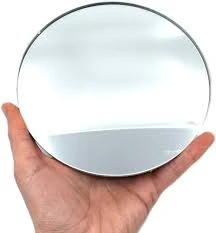

Understanding the Types of Low-E Glass Enhancing Energy Efficiency and Comfort
Low-emissivity glass, commonly referred to as low-E glass, plays an essential role in modern architecture and energy-efficient design. This specialized glass is coated with a thin layer of metallic oxides that reflect infrared energy while allowing visible light to pass through. The result is a significant enhancement in energy efficiency, making it a popular choice for residential and commercial buildings. Here, we explore the various types of low-E glass and their applications.
Understanding the Types of Low-E Glass Enhancing Energy Efficiency and Comfort
2. Soft Coat Low-E Glass Unlike hard coat glass, soft coat low-E glass is produced by applying a thin film of silver and other metallic oxides after the glass has been manufactured. This coating is more efficient in reducing heat transfer, making soft coat glass ideal for warmer regions. It offers a higher level of energy performance and excellent optical clarity. Soft coat low-E glass is often used in high-performance windows and curtain walls.

3. Passive Low-E Glass Designed specifically for passive solar applications, passive low-E glass optimizes solar heat gain while minimizing heat loss. It is particularly effective in regions with cold winters and mild summers. This type of glass allows maximum sunlight to enter the building, providing natural warmth and lighting while maintaining a comfortable indoor environment.
4. Low-E Glazing Systems Beyond individual panes of low-E glass, advanced glazing systems incorporate multiple layers of glass with low-E coatings. These systems often use argon or krypton gas between the panes to provide additional insulation. They are popular in modern energy-efficient buildings, contributing to reduced heating and cooling costs.
In summary, low-E glass is a crucial component in energy-efficient building design, with various types suited for different climates and applications. By understanding the benefits of hard coat and soft coat low-E glass, as well as passive and advanced glazing systems, architects and builders can create comfortable, sustainable, and energy-efficient spaces that are better for both occupants and the environment. Embracing low-E glass technology is a significant step towards reducing energy consumption and enhancing comfort in our living and working environments.